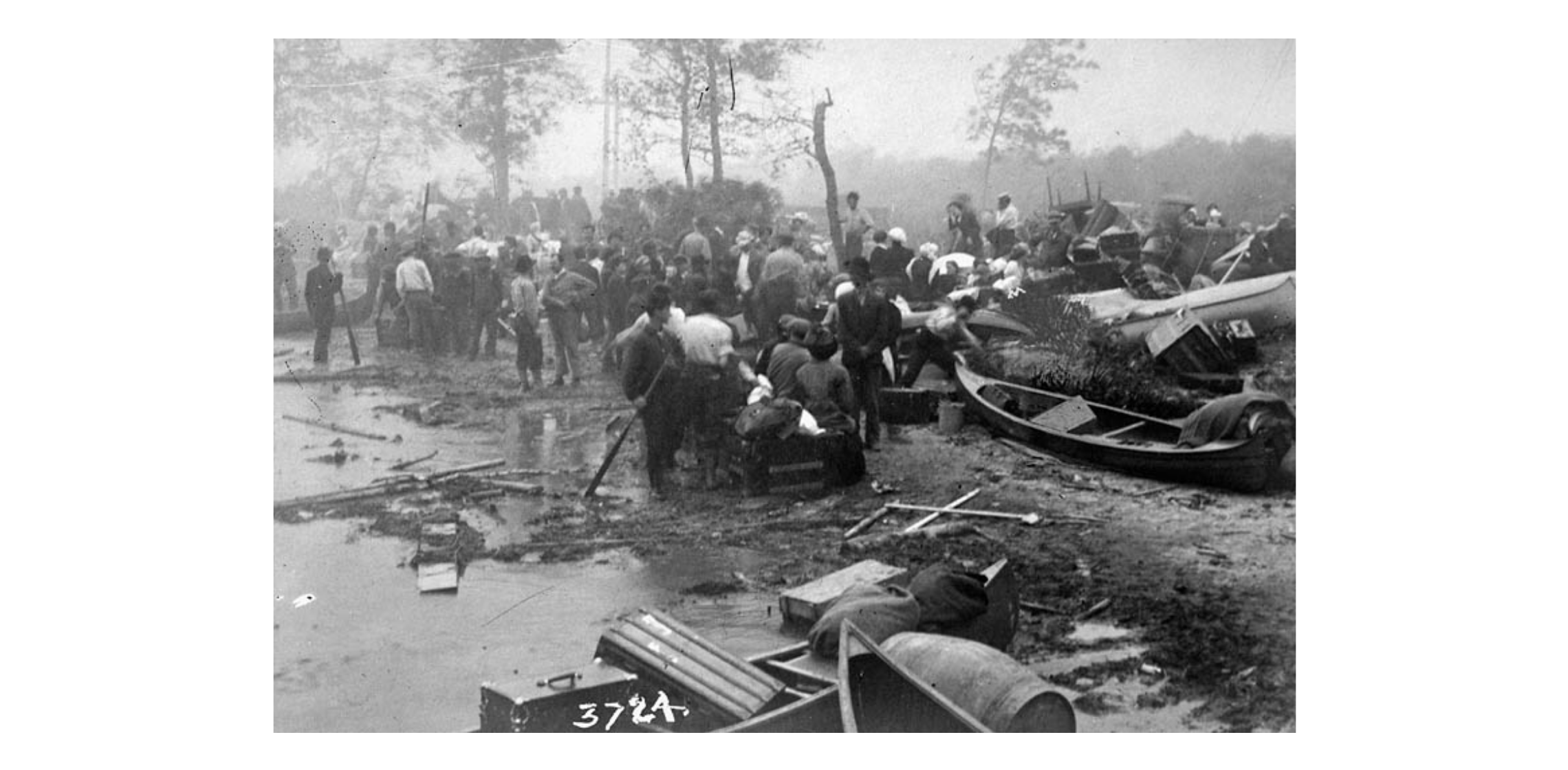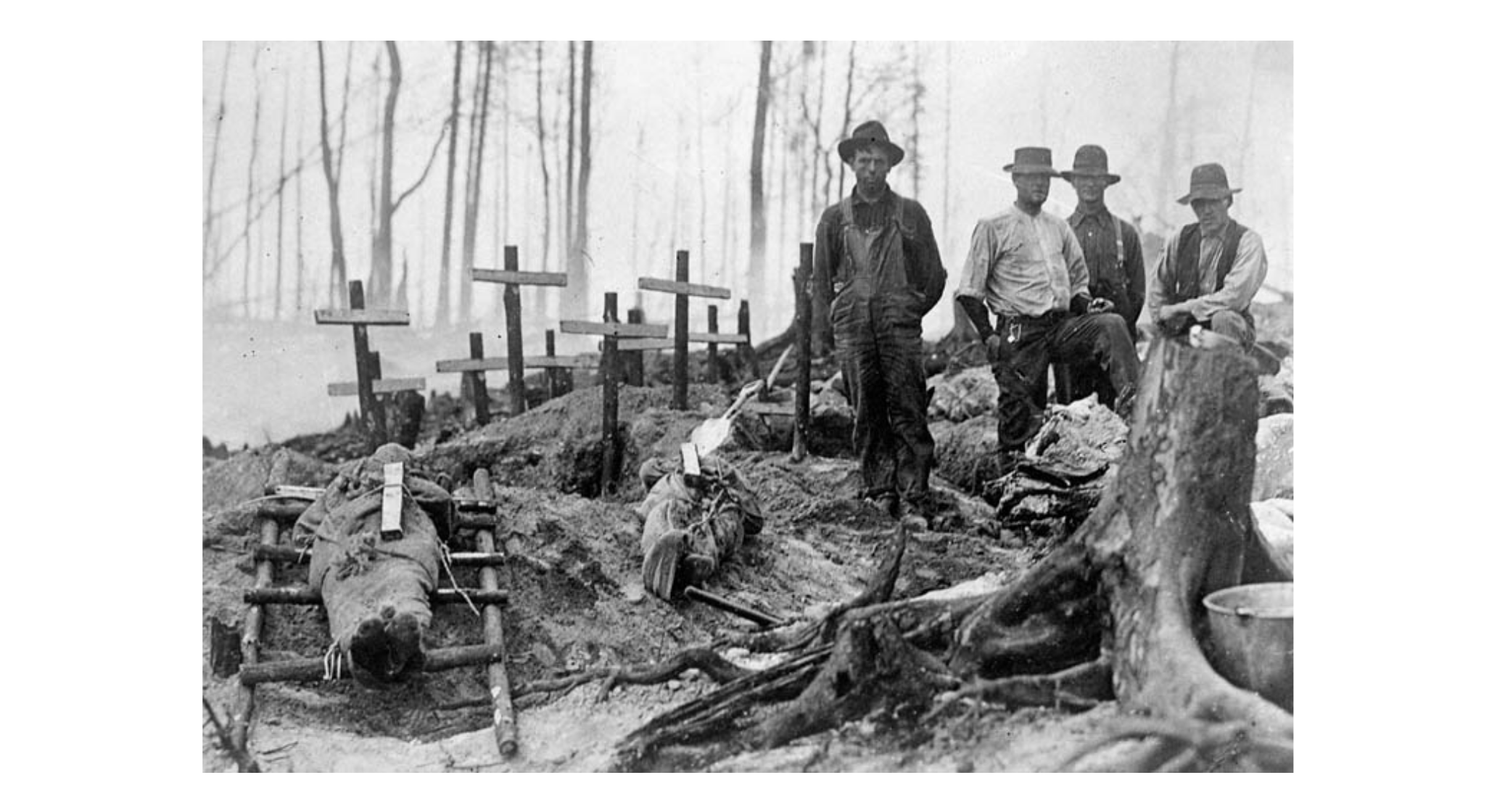The Canadian Red Cross (CRC) is widely known for its response to large-scale natural disasters: whether it’s the Fort McMurray wildfires or tornadoes in Ottawa, Red Cross volunteers are comforting and familiar responders. In 2020, however, the CRC only responded to 2 large-scale disasters. In contrast, the institution assisted over 2800 households following “personal disasters.”

Refugees embarking in a boat on Porcupine Lake. Credit: Toronto Star/Library and Archives Canada/PA-179598; Restrictions on use: nil; Copyright: expired
In the context of this research on climate change and migration, I was struck by how the Canadian Red Cross adhered to categories such as personal and large-scale without much clarity in the annual reports about how the scope of such disasters were defined. Throughout the 20th century, the Red Cross debated how to categorize events, but seemed to rely largely on a subjective, environmental approach that did not include quantifiable measures.
There appeared to be no national consensus for what constituted a major or minor disaster beyond how a local or provincial branch felt an event had impacted the community. As this research—in part—looks back in order to look forward at climate migration in Canada, understanding when personal disaster becomes relevant to the national conversation feels pertinent.
Provincially, in 1950, the Quebec division suggested that a major disaster was an event affecting over 40 individuals. At that time, provincial divisions worked relatively independently so it is not clear whether Quebec’s definition was widely adopted. Nationally, Public Safety Canada currently stipulates that at least 100 people need to be affected in order for an event to be a disaster. Neither the Red Cross then or Public Safety Canada now offer a clear explanation of how an individual needed to be affected in order to be counted as contributing to a disaster. Nor did they discuss why the threshold was 40 or 100 people.

Graves of victims of the Great Forest Fire of 1911. Credit: Toronto Star/Library and Archives Canada/PA-179599; Restrictions on use: nil; Copyright: expired
In 1957, the CRC was in the midst of determining what its relationship would be with provincial governments in times of disaster. The need for clarification was due, in part, to the increasing role that provincial Civil Defence departments were playing in major natural disasters. At the time, the Society considered defining a major disaster by its total expenditure exceeding $2000. It’s unclear from the annual reports whether this definition was adopted and whether it had an impact on power-sharing between Civil Defence and CRC. In fact, 1957 was the last time the CRC offered a definition of disaster within its reports. Since that time, the CRC has continued to categorize disasters as major, minor, large-scale, and/or personal, but the lines between the categorizations are unclear.
In 1959, for example, the Ontario Disaster Services Committee, the provincial arm of CRC, reported one major disaster while the national summary reported zero major disasters in any province that year. For Ontario, 125 homes lost to a fire in Lanark was a major disaster; to the country at large, however, it barely registered.
By including personal and minor disasters in their reporting and their disaster management response, the CRC acknowledges that individuals do not need to be part of a large-scale event in order for the loss of their home or community to be considered a disaster. The notion of personal disasters widens the scope of response and prompts us to consider the humanity behind Public Safety Canada’s definition of disasters. If the definition of disaster is linked to numbers alone, it becomes possible to conceptually negate the effects of emergencies that “only” affect 1-99 people. This is troubling.
When we consider the cumulative affects of climate change, we must consider the history of personal or minor disasters in order to understand the full effect of climate change on Canadian migration. If climate events caused only a handful of families to leave their farms, for example, it would not register as a disaster. But if we reframe that migration within the context of disaster, are we able to track a longer history of climate-related movement in Canada? These are some of the questions that I hope we might uncover as we continue to research the history of disaster migration in Canada.
– PhD Candidate Helen Kennedy